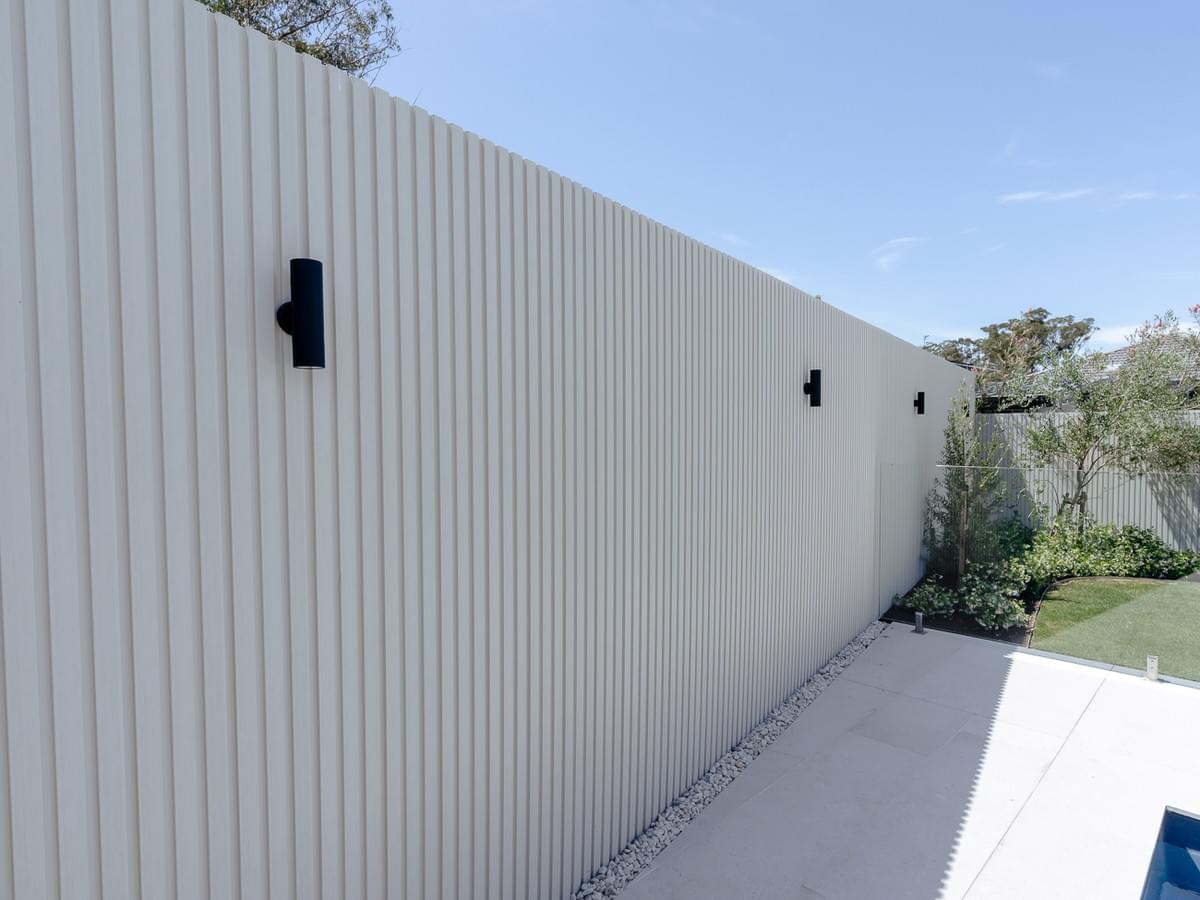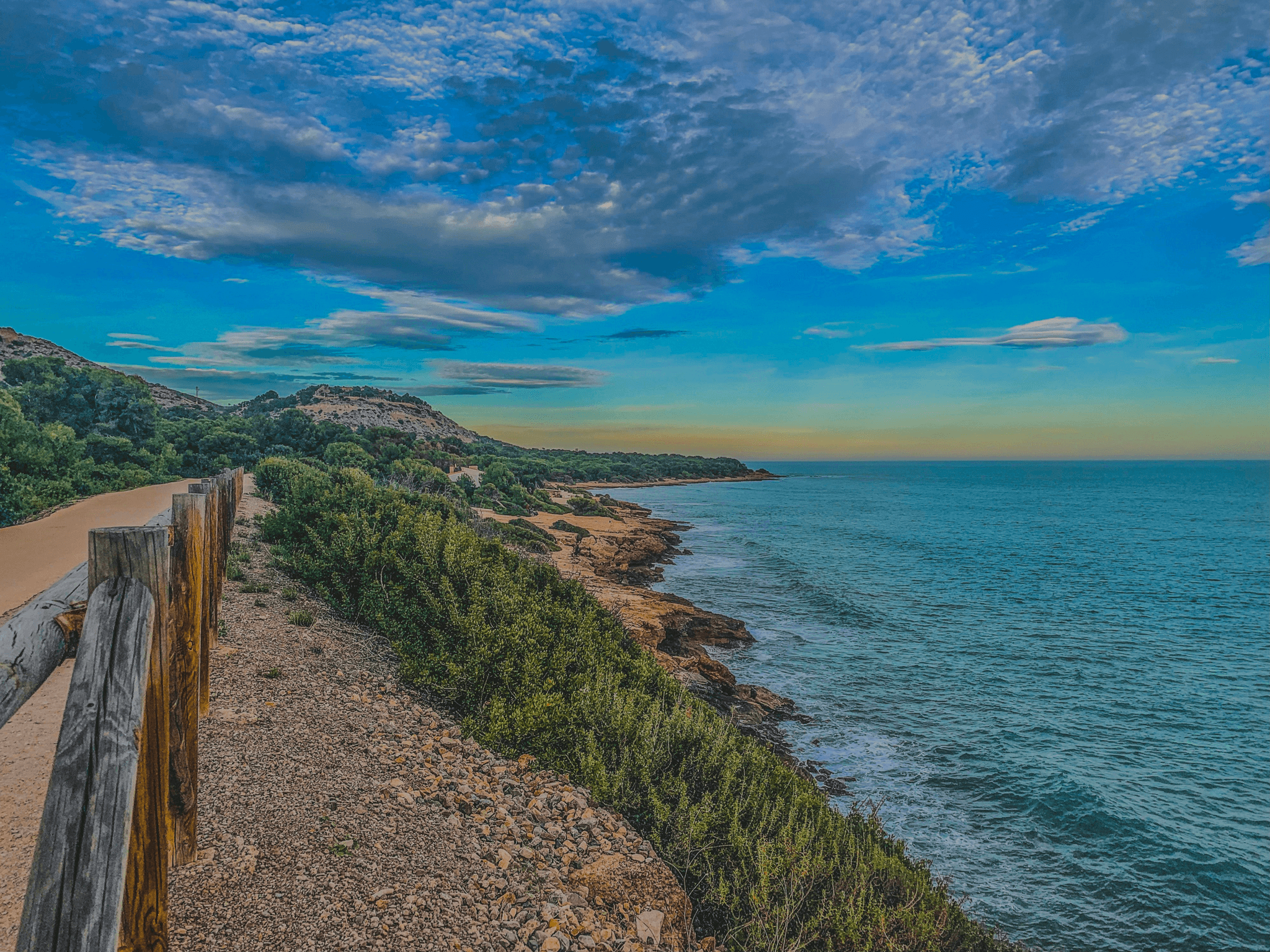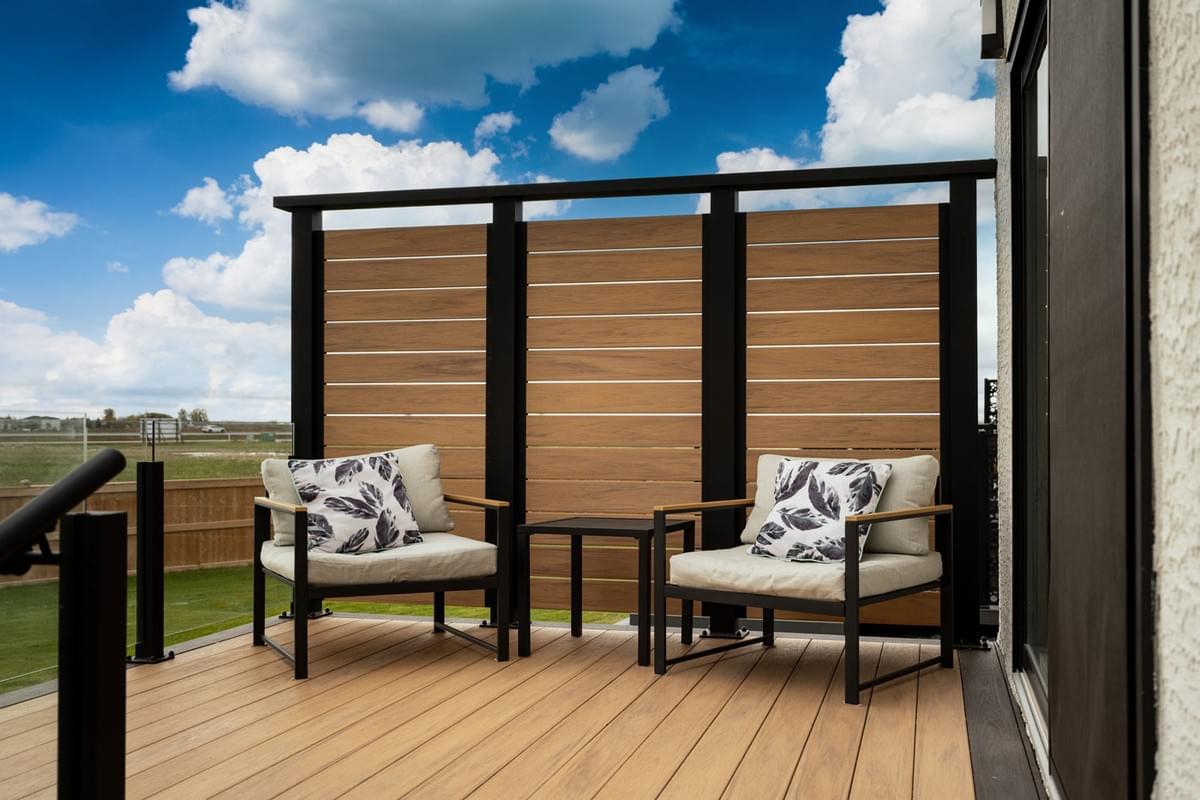Introduction
The best fencing for coastal areas not only enhances the aesthetic appeal of your property but also withstands the harsh elements that coastal environments present. From saltwater corrosion to high winds, selecting the right fencing materials is crucial for ensuring durability and longevity.
Why Coastal Areas Need Special Fencing
Coastal regions experience extreme weather conditions that can wreak havoc on traditional fencing options. The salty air can accelerate rust and decay in standard metal and wood fencing materials, making it essential to choose options specifically designed for such environments. Therefore, investing in the best wood fence material or other weather-resistant alternatives becomes imperative for homeowners looking to protect their properties.
Understanding the Challenges of Coastal Fencing
When considering fencing near the coast, one must account for factors like moisture, wind, and salt exposure—all of which can significantly impact the lifespan of your fence. For instance, untreated wood may quickly rot or warp due to moisture intrusion while metals can corrode under salty conditions. Awareness of these challenges enables homeowners to make informed decisions about which wood fencing materials near me are best suited for their specific needs.
Key Features of the Best Fencing
The ideal coastal fence should possess certain key features: durability against harsh weather conditions, minimal maintenance requirements, and a design that complements its surroundings. Look for materials that are resistant to rot and corrosion while also providing privacy—after all, who doesn’t want a bit of seclusion while enjoying ocean views? By focusing on these attributes when choosing privacy fence materials or any other type of coastal fencing, you ensure your investment will stand strong against the test of time.
Selecting the Right Fencing Materials

Choosing the right fencing materials is crucial for coastal areas, where the environment can be particularly harsh on structures. The best fencing for coastal areas needs to withstand saltwater, high winds, and moisture that can deteriorate traditional materials quickly. By understanding the options available, homeowners can make informed decisions that balance durability and aesthetics.
Comparing Wood Fencing Materials
Cedar and redwood are two of the best wood fence materials for coastal regions due to their natural resistance to decay and insects. However, not all wood fencing is created equal; some varieties may warp or splinter when exposed to salty air or extreme weather conditions, so it's essential to compare options thoroughly.
If you're searching for wood fencing materials near me, look into local suppliers who specialize in durable woods suited for your environment. Furthermore, understanding how different types of wood react to coastal climates will help you choose a material that lasts longer and requires less maintenance over time. Remember, investing in quality now means fewer headaches down the line!
Weather-Resistant Options for Coastal Areas
Coastal environments demand weather-resistant options that can stand up against nature's fury without breaking a sweat—or a board! For those looking at fencing cost versus longevity, vinyl and aluminum are excellent alternatives that require minimal upkeep while providing robust protection against wind and moisture damage. These materials won’t rot or rust like traditional wood fences might under salty conditions.
Additionally, if you're leaning towards wood but still want some extra protection from the elements, consider pressure-treated lumber designed specifically for coastal use. This type of treatment infuses wood with preservatives that fend off rot and pests while maintaining its structural integrity over time. Ultimately, choosing weather-resistant options is about ensuring your investment stands tall against whatever Mother Nature throws your way.
Eco-Friendly Choices: Composite Fencing
For environmentally conscious homeowners seeking sustainable solutions without sacrificing style or durability, composite fencing is an appealing choice among modern fencing materials. Made from recycled plastics and wood fibers, composite fences mimic the look of traditional wood while offering enhanced resistance against moisture and UV rays—perfect for coastal living! Plus, these eco-friendly choices often come with warranties that guarantee their performance over many years.
If you're considering this option but unsure where to find it locally—searching fencing wood near me should yield results tailored toward composite products as well as traditional woods like cedar or redwood. Not only do they provide privacy fence materials that are stylishly modern but they also contribute positively to reducing waste in landfills by utilizing recycled content in their makeup. So why not opt for a fence that's good for both your home and the planet?
Top Wood Fencing Types for Coastal Regions

Cedar vs. Redwood: The Best Wood Fence Material
Cedar and redwood are two of the most popular choices when it comes to wood fencing materials near me, each offering unique advantages. Cedar is naturally resistant to moisture and insects, making it a great option for coastal climates where saltwater can wreak havoc on less resilient woods. On the other hand, redwood boasts a rich color and grain pattern that many homeowners find appealing; it's also durable but generally more expensive than cedar, which can affect your overall fencing cost.
When deciding between these two options, consider factors such as your budget and desired aesthetic. If you're looking for the best wood fence material that combines affordability with resilience against coastal elements, cedar may be your best bet. However, if you’re willing to invest more upfront for stunning visual appeal and longevity, redwood could be worth every penny.
Pressure-Treated Wood: Durability Against Elements
Pressure-treated wood has become increasingly popular among homeowners seeking sturdy fencing solutions in coastal areas. This type of wood undergoes a treatment process that infuses preservatives deep into its fibers, enhancing its resistance to decay and insect damage—an essential feature given the harsh conditions found near shorelines. While pressure-treated options may not have the same natural beauty as cedar or redwood, they offer an excellent balance between cost-effectiveness and durability.
For those who prioritize longevity in their investment without sacrificing too much on aesthetics, pressure-treated lumber can be an ideal choice among various fencing materials available today. It's important to note that while this option is affordable upfront—making it one of the budget-friendly choices—it might require additional maintenance over time compared to naturally resistant woods like cedar or redwood.
Local Wood Fence Near Me: Sourcing Smartly
Finding quality local wood fence options near me can make all the difference when selecting your new coastal fence—both in terms of convenience and supporting local businesses! Local suppliers often provide better insights into what types of wood perform well in specific climates while also ensuring timely delivery for your project needs. By sourcing from nearby lumber yards or specialty stores specializing in fencing materials, you might discover unique selections tailored specifically for coastal environments.
Additionally, buying locally can help reduce transportation costs associated with shipping materials from far away—keeping your overall fencing cost manageable while still achieving high-quality results! Don’t hesitate to ask about eco-friendly practices or sustainable sourcing methods; many local suppliers are eager to share their commitment toward responsible forestry practices when providing customers with excellent privacy fence materials suitable for their homes.
Privacy Fencing Solutions

Best Privacy Fence Materials for Coastal Homes
For coastal areas, choosing sturdy and weather-resistant privacy fence materials is crucial. Vinyl fencing has become increasingly popular due to its durability against salt and moisture, making it one of the best fencing for coastal areas. Additionally, wood fencing materials like cedar and redwood offer natural beauty and resistance to decay, but they require regular maintenance to ensure longevity against the elements.
If you're considering wood fence near me options, look for local suppliers who specialize in pressure-treated wood, which can provide extra protection against rot and insects. Composite fencing is also a great eco-friendly choice that mimics the look of wood while resisting fading and warping—perfect for those salty air conditions! Ultimately, your choice should balance aesthetics with resilience.
The Importance of Design in Privacy Fencing
Design plays a pivotal role in how effective your privacy fence will be—not just in blocking views but also in enhancing your home's overall appeal. A well-designed fence can complement your landscaping while serving its primary function of providing seclusion from prying eyes or bustling beach traffic. Consider styles that incorporate latticework or decorative tops; they add character without compromising on privacy.
Moreover, think about color schemes that harmonize with your home’s exterior—this way, you get both functionality and style rolled into one fantastic package! Remember that when selecting design elements, you want something that not only looks good but also stands up to harsh weather conditions typical of coastal regions. After all, what good is a beautiful fence if it can't withstand Mother Nature's whims?
Combining Aesthetics and Functionality
The best wood fence material isn't just about looks; it's about creating a balance between aesthetics and functionality as well. Your privacy fence should serve its purpose effectively while enhancing the beauty of your outdoor space—think elegant lines paired with sturdy construction! This means selecting materials that are not only visually appealing but also resilient enough to handle salty air and moisture.
Additionally, consider incorporating features like gates or trellises that blend seamlessly into your design without sacrificing security or durability—after all, who says functional can't be fabulous? With so many options available among fencing wood fencing types—from classic picket styles to modern panel designs—you’re bound to find something that checks all boxes on your wish list!
Cost Considerations for Coastal Fencing

When it comes to coastal fencing, understanding the costs involved helps you make informed decisions. The price of fencing can vary significantly based on materials, design, and installation methods. Knowing what to expect will ensure you’re prepared for the investment in the best fencing for coastal areas.
Fencing Cost Breakdown: What to Expect
The cost of fencing in coastal regions typically includes materials, labor, and any additional features like gates or decorative elements. For instance, wood fencing materials can range from affordable options like pressure-treated wood to pricier choices such as cedar or redwood. On average, you might expect to pay between $15 to $30 per linear foot for quality wood fence installations—though this can fluctuate based on local pricing and availability of wood fence near me.
Budget-Friendly Options and Upgrades
If you're working with a tighter budget but still want the best wood fence material, consider exploring composite or vinyl options that mimic the look of traditional wood without breaking the bank. These materials often require less maintenance than standard wood fencing while providing durability against harsh coastal elements. Additionally, keeping an eye on local sales or sourcing your fencing materials from nearby suppliers can lead to significant savings—just search for wood fencing materials near me for great deals!
Investing in Quality for Long-Term Value
While it might be tempting to opt for cheaper privacy fence materials or low-quality options initially, investing in high-quality fencing pays off in the long run. Durable fences made from premium woods like cedar resist rot and damage better than their lower-cost counterparts, meaning fewer repairs down the line. Ultimately, choosing quality over cheap alternatives ensures that your investment remains intact against coastal weather challenges while enhancing your property's value.
Maintenance Tips for Coastal Fences

Maintaining your coastal fence is essential to ensuring its longevity and beauty. The unique challenges posed by salt air, moisture, and storms mean that routine care is not just a good idea; it’s a necessity. By investing time in maintenance, you can enjoy the best fencing for coastal areas without the worry of premature decay or damage.
Routine Care for Longevity
Routine care involves regular inspections and upkeep to keep your fencing in top shape. Start by checking for any signs of wear, such as splintering wood or rusted metal components; addressing these issues early can save you from costly repairs down the line. Additionally, cleaning your fence periodically with a gentle soap solution can help remove dirt and salt deposits that accumulate over time, ensuring your wood fencing materials remain visually appealing.
Another important aspect of routine care is applying protective coatings or stains designed specifically for coastal environments. These products not only enhance the appearance of your fence but also provide an added layer of defense against harsh weather conditions. Remember to consult local resources to find wood fencing materials near me that are specifically treated for durability in coastal settings.
How to Combat Salt and Moisture Damage
One effective strategy is choosing the right fencing materials from the outset; opting for weather-resistant options like composite or pressure-treated wood can significantly reduce damage from these elements. Regularly applying sealants can also create a barrier against moisture infiltration while preserving the integrity of your best wood fence material.
In addition to protective measures, consider installing your fence at an angle that minimizes direct exposure to prevailing winds and salty spray. This simple adjustment can prolong its lifespan dramatically by reducing wear from harsh conditions. If you notice persistent issues despite these precautions, it might be time to evaluate whether you're using the best fencing for coastal areas available in your region.
When to Call the Experts: Repairing Your Fence
While many maintenance tasks can be handled independently, some situations require professional assistance—especially when it comes to repairing significant damage caused by storms or rot due to prolonged exposure to saltwater and humidity. If you find yourself facing extensive repairs beyond basic upkeep—like replacing entire sections or dealing with structural instability—it’s wise to call in experts familiar with coastal fencing challenges.
Before hiring help, do some research on local companies specializing in privacy fence materials suitable for coastal homes; they’ll understand how different materials react under specific environmental conditions and recommend appropriate solutions tailored just for you! Moreover, keeping an eye on potential costs associated with repairs ensures you stay within budget while still getting quality work done—after all, investing in quality now means less hassle later on.
Conclusion
Choosing the best fencing for coastal areas is no small feat, but it’s a decision that can significantly impact your property’s look and longevity. By understanding the unique challenges faced by coastal environments—like salt spray, moisture, and high winds—you can make informed choices that ensure your fencing stands the test of time. Whether you’re looking for wood fencing materials or eco-friendly options, knowing where to source them is crucial.
Finding the Best Fencing for Your Home
When searching for wood fence near me, consider local suppliers who specialize in materials suited for coastal conditions. The best wood fence material will not only enhance your home’s aesthetic but also provide durability against harsh elements. Don’t forget to weigh your options carefully; investing in quality fencing materials now can save you from costly repairs down the line.
Balancing Aesthetics and Durability
Achieving a perfect balance between aesthetics and durability is key when selecting privacy fence materials or other types of fencing. A well-chosen fence should complement your home while standing resilient against wind, salt, and moisture typical in coastal areas. Remember, even the most beautiful designs won’t serve you well if they deteriorate quickly; thus, prioritize quality alongside looks.
Resources for Your Fencing Journey
To navigate your journey towards finding the right fencing materials, consider consulting online resources or local experts who understand coastal requirements intimately. Websites dedicated to woodworking or home improvement often provide insights into various wood fencing materials near me that are ideal for seaside living. With a clear understanding of fencing cost and maintenance needs ahead of time, you're set to make a choice that combines beauty with functionality.
